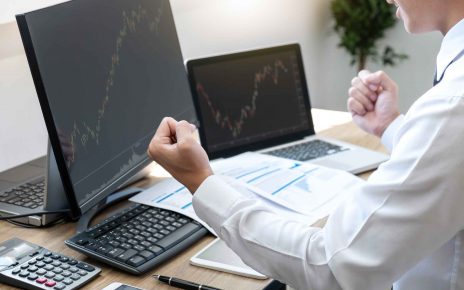Strength
- Livestock-cash market strength pushes the U.S. hog futures higher. On Oct. 6th, the U.S. hog futures rose for their top in over a year on Tuesday, rallying to maintain pace with the latest profits in the money market.
- The strength of the cash market came from the continued potential great need of the conventional U.S. grilling season coming to a close together with the weather conditions turning cooler. There’s been no regular occurrence since March 2020, and this late summer contra-seasonal hog and pork strength surely work that theme.
- Benchmark money market of Dubai crude appears poised to retain its vibrancy against Dubai futures going into the new trading cycle for loading cargoes in, with the sentiment that remained steady on the first of July as the marketplace awaits fresh signals ahead of the release of fresh Middle East official selling rates.

- US hog futures rose to their top in over a year on the sixth of October, rallying to maintain a similar pace with profits in the cash market.
- The Chicago Mercantile Exchange October lean hogs obtained a gain of 1.575 cents to close from 76.325 cents a pound. Most-active December hogs had been up 1.225 cents and settled at 63.875 cents.
- Consistently, the four-month contract’s highest move of 76.375 USD was its top after the fourteen of August 2019.
- After posting the biggest single-day gain within the last 18 months, natural gas futures increased to another leg, rising higher than the long-term high established during the early part of this year. September Nymex gas settled at 2.193 on Tuesday after rising by 9.2 cents from the closing price on Monday. The rise in October was by 9.5 cents to 2.334 USD.
- How spot rates behave over the coming few weeks will probably be a heavy factor for determining the futures direction. Henry Hub dollars jumped to a position closed to 1.90 USD on Monday, and also many additional Gulf Coast locations did a lot better with increases of twenty cents or more compared to the weekend package. On Tuesday, prices kept surging, with the benchmark shifting beyond 2.00 USD while the remaining U.S. marketplaces follow in a similar direction.
- Meanwhile, the storage space trajectory continues to be crucial. The typical price of injections into storage space is 11 % more relative to the five year average for the time being in the refill season. Whether or not the speed of injections matched the five-year typical rate of 9.2 Bcf/d for the rest of the refill period of the year, complete U.S. inventory will be 4,152 Bcf on the 31st of October and this would be 429 Bcf much higher compared to the five-year typical rate of 3,723 Bcf for that particular moment of the season.
Weaknesses
- The US pork cut-out which is a s//i/gn of wholesale pork prices posted a fall and come to a rate of 92.55 cents for every cwt. However, it made its four months highest price in the past couple of weeks.
- Market activity over the past few days pointed to lower worries of containment this autumn. Last Friday, October posted ninety-six cents below the contract of January 2020. By Tuesday, which discount collapsed to seventy-three cents.
- The fluctuation between a weaker and stronger US dollar might necessitate shifting expense exposure. Each environment produces various possibilities and mistakes for investors. A financial advisor can sort out what influence the dollar’s weakness or strength contains on portfolios and possibly help you pivot.

Opportunities
- If the Fed reduces the interest rate, the value of the US dollar declines simply because investing in US bonds is less appealing. American products, in turn, get cheaper abroad. US firms that export virtually all their products opt for a weak dollar since it makes their goods less expensive to buyers overseas. It usually leads to lower unemployment numbers right here in the US as manufacturing ramps up.
- A weak dollar may also provide tailwinds for worldwide investment in emerging market countries with outside US debt (e.g., Latin America, Eastern Europe, Africa, the Middle East, and Asia). The loans they have deceived US dollars start to be more affordable for them to settle. Nations that export commodities (e.g., nations in South Africa and America) usually see an increase, also. The dollar is the pricing benchmark for many raw materials and farming products. After the 2008 global financial problem, there is been a formidable inverse relationship between commodities and the US dollar.
- The worldwide worst-performing equity markets for the season are bank stocks, particularly in Europe. The largest, best managed European lenders trades at minimal valuations, nevertheless their balance sheets are sufficiently robust to take up all except the most draconian of economic results.
- Investors have let go of these stocks, partly since the banks have put a temporary hold on dividends and also share buybacks while in the pandemic with the request of regulators – but a lot of the businesses will probably once again pay dividends next season. The resumption, together with a revival in buybacks, must reward shareholders for their patience of theirs.
- Investors have abandoned these stocks, within component since the banks have suspended dividends and also share buybacks while in the pandemic with the petition of regulators – but a lot of the businesses will probably once again pay dividends next season. The resumption, together with a revival in buybacks, must reward shareholders for the patience theirs.
- Whether you’re trying to diversify or searching for fresh ways to boost your growth potential, overseas stocks are the solution. The likelihood of speeding up long-term growth, improving efficiency, and improving standards of living supports the theory that the most powerful growth in the world may come outside U.S. borders.
- A weakening U.S. dollar likewise provides life to overseas stocks. Study shows that in the years when the American dollar is fairly sensitive, foreign shares climb eighty-five percent of the time.
Threat
- The Fed is dealing with a threat that has not been encountered before- an unexpected collapse in business revenue as well as household income from a worldwide pandemic. Equity marketplaces are plunging, indicating fear associated with a worldwide recession, and volatility within the bond market simply hit probably the highest after the economic crisis. U.S. lawmakers are hurrying to release a fiscal package of almost 1.3 trillion dollars.
- The rising U.S. dollar increased speculation that there may be a synchronized attempt to weaken the currency. Nevertheless, currency strategists see a small possibility that such efforts will be successful, reports Bloomberg. The dollar is not surging for any basic reasons. It is only surging because of the liquidity crisis pushed by a dread of recession and demand for cash.
- Corporate share buybacks will probably stop. Eight major banks recently stopped the process and many more are likely to follow the same trend as businesses concentrate much more on supporting clients and balance sheets.
- The thought behind the proposal of Modern Monetary Theory (MMT) by supporters is that countries central banks do not have to stress about budget deficits since they can purchase whatever debt the government issues. The U.S. deficit kept going up, particularly after the 1.3 trillion (or more) stimulus package deal announcement when the Trump administration floated the thought of a 50-year bond to fund the s1.3 trillion stimulus package.

- U.S. President Donald Trump’s Covid 19 diagnosis makes an already disorganized election season even more chaotic, the Europe and U.K. are in danger of more lockdowns as coronavirus cases grow; as well Brexit talks are still up in the air. Inside Asia, tensions are simmering between pro-democracy activists as well as the local authorities of Hong Kong while India’s underfunded health care system is dealing with a growing struggle to manage the disease outbreak.
- Finding compelling reasons to commit to investments when faced with a lot of unknowns is a daunting struggle – but there are possibilities with cyclical stocks – that benefit once the economic system gets attractive.
Before committing, build a 6 months emergency savings fund for 6 weeks of expenses, if practical.





